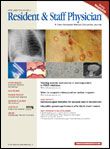How to Curb the Cost of Medical Education
"It costs how much?"I asked Tim incredulously. My initial beaming pride over my youngest brother's admission to medical school was quickly replaced by nausea. His school advised that students would need almost $55,000 for tuition, fees, and living expenses—per year. My own medical school loan debt remains very imposing, but Tim's would be ridiculous. This had to be a mistake. After all, his is a state school, in a small town with a modest cost of living—impossible, right?
Wrong. It turns out his school was citing a number "not unreasonable" compared with other medical schools. Sure that my sticker shock was justified, I was compelled to dig deeper.
The facts are quite disturbing. The Association of American Medical Colleges reports that allopathic medical school tuition and fees are at an all-time high. In the 2004-2005 school year, private medical school costs (excluding books, supplies, or living expenses) were about $35,000. Public school charges varied from about $19,000 for in-state matriculants to about $37,000 for out-of-staters. These figures represent a 4.5% increase for private schools and an 8.5% increase at public schools from just 1 year earlier.1 Compared with the change in the Consumer Price Index during the past 2 decades, private school tuition has increased by 50% and public schools by a whopping 133% in so-called constant dollar terms.2
Consequently, medical student debt levels are growing at historic rates. Osteopathic students in the class of 2003 carried an average of $124,000 in debt. Among allopathic medical students, 80% graduated in the red in 2004, owing an average of $115,000. For private school students, the total has climbed to more than $140,000.3
Minority students are graduating with just as much debt as whites. All students are relying more heavily on loans than ever before, and monthly repayments are gobbling up an exponentially increasing amount of a young physician's income.2 While student debt has grown, earnings for practicing physicians in most specialties have stagnated.4
Okay, these numbers cause my brother and me visceral pain, but why should anyone else care? After all, physicians still earn considerably more than most other advanced-degree professionals. And the cost of other professional schools is skyrocketing too.
Unlike many other professions, however, the distribution, diversity, and training of US physicians has long been an issue of "great public interest,"and therefore controlled by much public policy and funding. Having physicians with outstanding credentials has been deemed too important to leave to market forces alone. Now evidence shows that medical education debt may strongly affect physician demographics.
P
A new study corroborates early 1990s data that debt may weigh heavily on specialty choice. Of more than 14,000 graduating medical students surveyed in 2002, only 18% with less than $50,000 in debt said their debt influenced their specialty choice, whereas 55% of those owing more than $200,000 said loans influenced their career decision (<.001).5 In addition, when gifted undergraduate students were asked why they did not apply to medical school, only minority students said the cost of medical education was the primary reason.2 Rapid growth in medical education debt may already be hurting the future supply of certain specialties and the diversity of the physician workforce.
The Higher Education Act (HEA) dictates the federal regulations concerning grants and loans for undergraduate and graduate students of all disciplines. The HEA is due for reauthorization by the end of 2005. The Resident and Fellow Section and Medical Student Section of the American Medical Association (AMA) have been lobbying tirelessly for the following changes to the current HEA, seeking to:
- Reduce Stafford loan origination fees
- Repeal the "single holder rule" to invite market competition among lenders and force down interest rates
- Allow borrowers to choose between fixed or variable interest rates
- Include dependent-care costs in the "cost of attendance"definition
- Expand loan deferment periods and the definition of "economic hardship."
Some (but not all) of these points are included in bills now before Congress: HR 609 in the House and S 1614 in the Senate. These AMA-endorsed changes to the HEA would not suddenly make medical school inexpensive. However, these small fixes could save medical students and physicians millions of dollars in loan debt and perhaps help keep talented college students on the path to becoming physicians.
Please write or call your US Congressperson and Senator today. It takes less than 5 minutes to identify your representatives and their contact information using the AMA's Grassroots Action Center Web site, available at http://capwiz.com/ama/home/. Tell them to pass the new HEA, which must include the AMA-supported bullet points above.
My brother Tim and I thank you now. America's patients will thank you for years to come.
Joseph A. Craft, MD
Chair
American Medical Association-Resident and Fellow Section
jcraft11@yahoo.com
1. Association of American Medical Colleges. Tuition and student fees, first year medical students 2004-2005. Available at: https://services.aamc.org/tsfreports/TSF_Report/select.cfm?year_of_study=2005.
2. Jolly P. Medical school tuition and young physician indebtedness. Washington, DC: Association of American Medical Colleges; 2004.
3. American Medical Association Medical Student Section Task Force on Medical Education Debt. Medical student debt. Sept 28, 2005. Available at: www.ama-assn.org/ama/pub/category/5349.html.
Med
Econ
4. Lowes R. Exclusive survey: the earnings freeze—now it's everybody's problem. . 2005;82(18):58.
Acad Med.
5. Rosenblatt RA, Andrilla CH. The impact of US medical students'debt on their choice of primary care careers: an analysis of data from the 2002 medical school graduation questionnaire. 2005;80:815-819.
